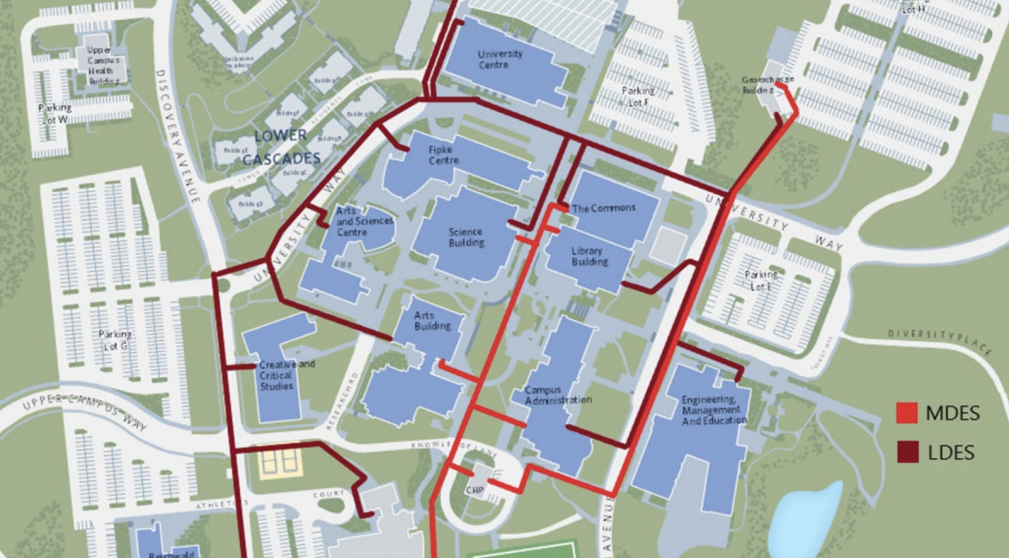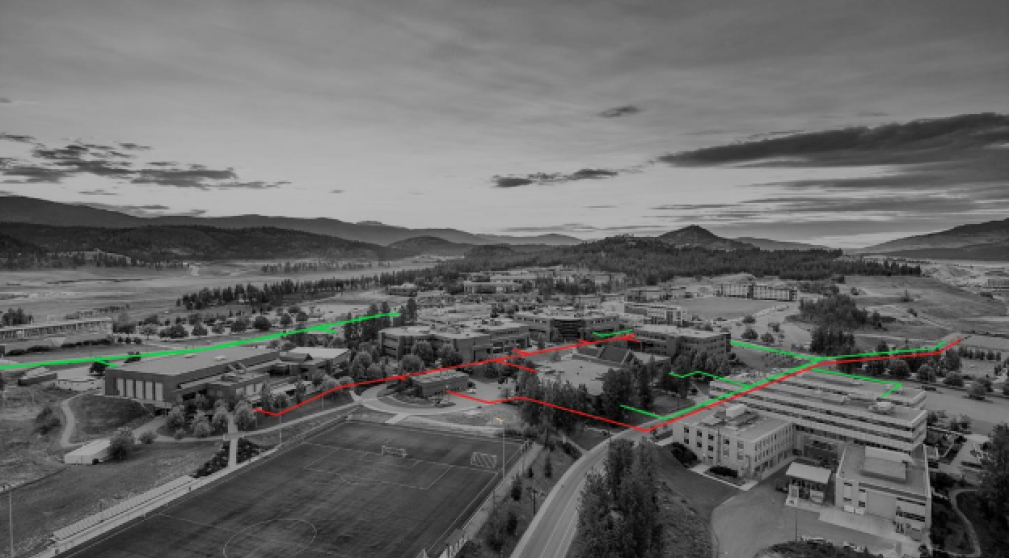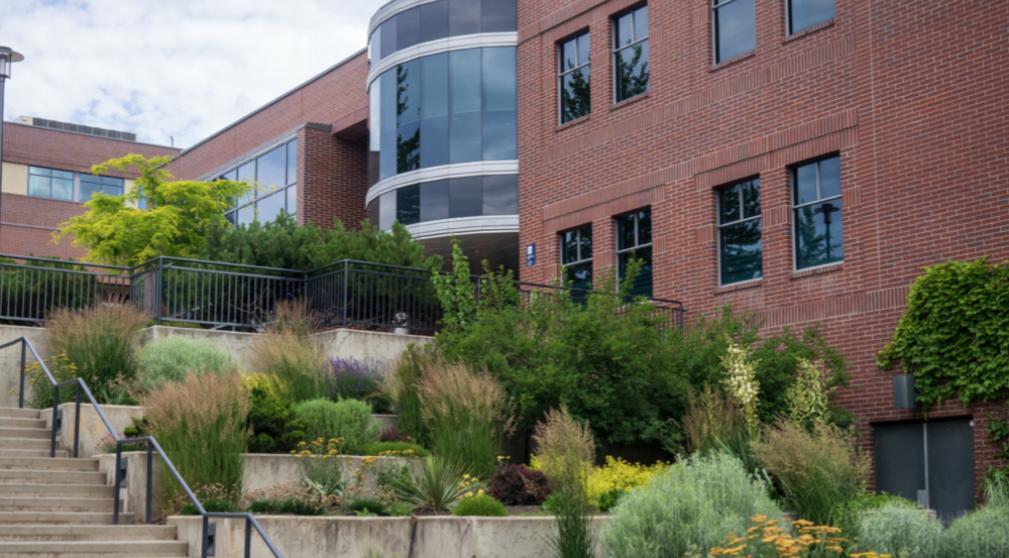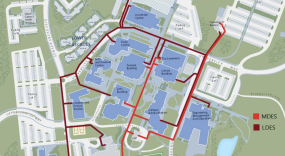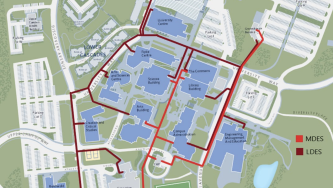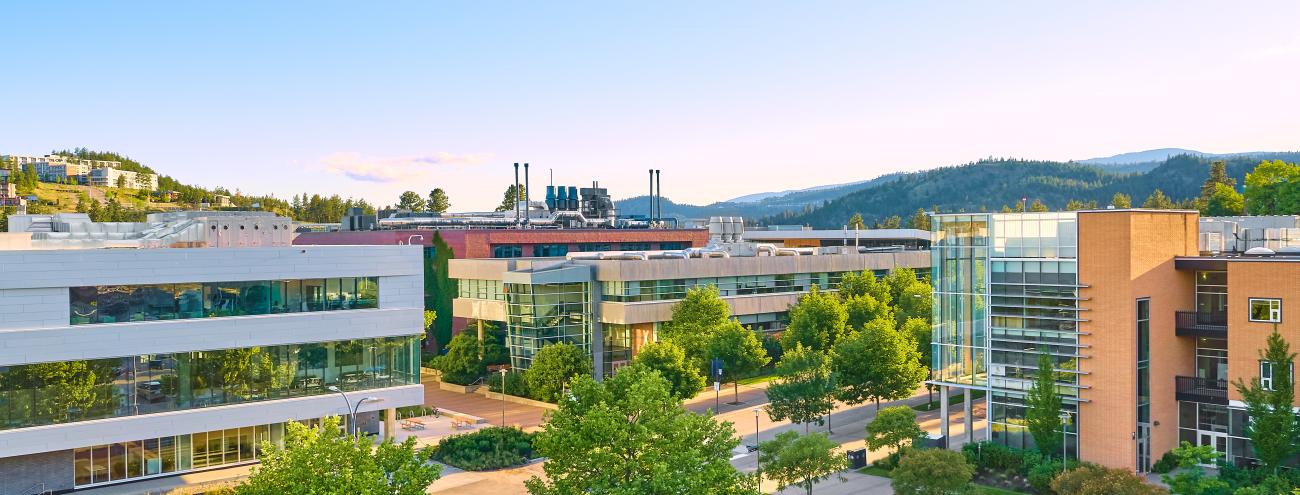
Improve the Efficiency of the Energy System for the Campus’s Legacy Academic Buildings
This project focuses on optimizing energy efficiency in UBC Okanagan’s legacy buildings through innovative and cost-effective modeling, improving the district energy system to cut greenhouse gas emissions and set a scalable example for sustainable building practices.
Project Team
Faculty lead: Klaske van Heusden, Assistant professor, School of Engineering
Staff Lead: Colin Richardson, Associate Director Energy Team, UBCO
Co-lead: Warren Hare, Professor, Dept. of Computer Science, Mathematics, Physics and Statistics
UBC Okanagan set an ambitious target for greenhouse gas (GHG) emissions, including a reduction of 65% in emissions from campus operations by 2030. Improving the efficiency of the existing buildings is one of the actions taken at UBCO to achieve this goal.
Buildings are responsible for approximately 30% of CO2 emissions globally, with the majority of this energy used for heating, cooling and ventilation. Despite this climate impact, most buildings function well below their optimal design efficiency. UBC Okanagan’s district energy system is no exception. The Energy Team estimates that, for example, the medium heat district energy system (MDES) functions only at ~68% efficiency annually, but has an optimal design efficiency of 90%.
Optimization of building climate control systems can significantly increase energy efficiency, with average reported energy savings of 13% to 28%. Model predictive control (MPC) has emerged as a promising technology for enhancing building efficiency, reducing energy usage through optimized thermal comfort management and demand response capabilities1.
The technology to achieve this is mature and reliable, yet not used in practice. Implementing this technology requires trained personnel for commissioning and maintenance and it needs accurate mathematical models for each individual building, which are complex and expensive to develop. This project looks at making this modeling step easier and less expensive. By treating the modeling step as a design problem, the resulting models can be used for simple, reliable, and high-performing controllers that are relatively easy to maintain.
This project will improve the energy efficiency of the UBCO MDES, reducing our campus’ greenhouse gas emissions and reducing cost. It will serve as a demonstration of the feasibility of improvement of energy efficiency of buildings without the need for large initial investment into accurate modeling. Enabling large-scape adoption of energy efficiency optimization will significantly reduce global GHG emissions.
Learn more about UBC Okanagan Campus Energy System
Related Publications
